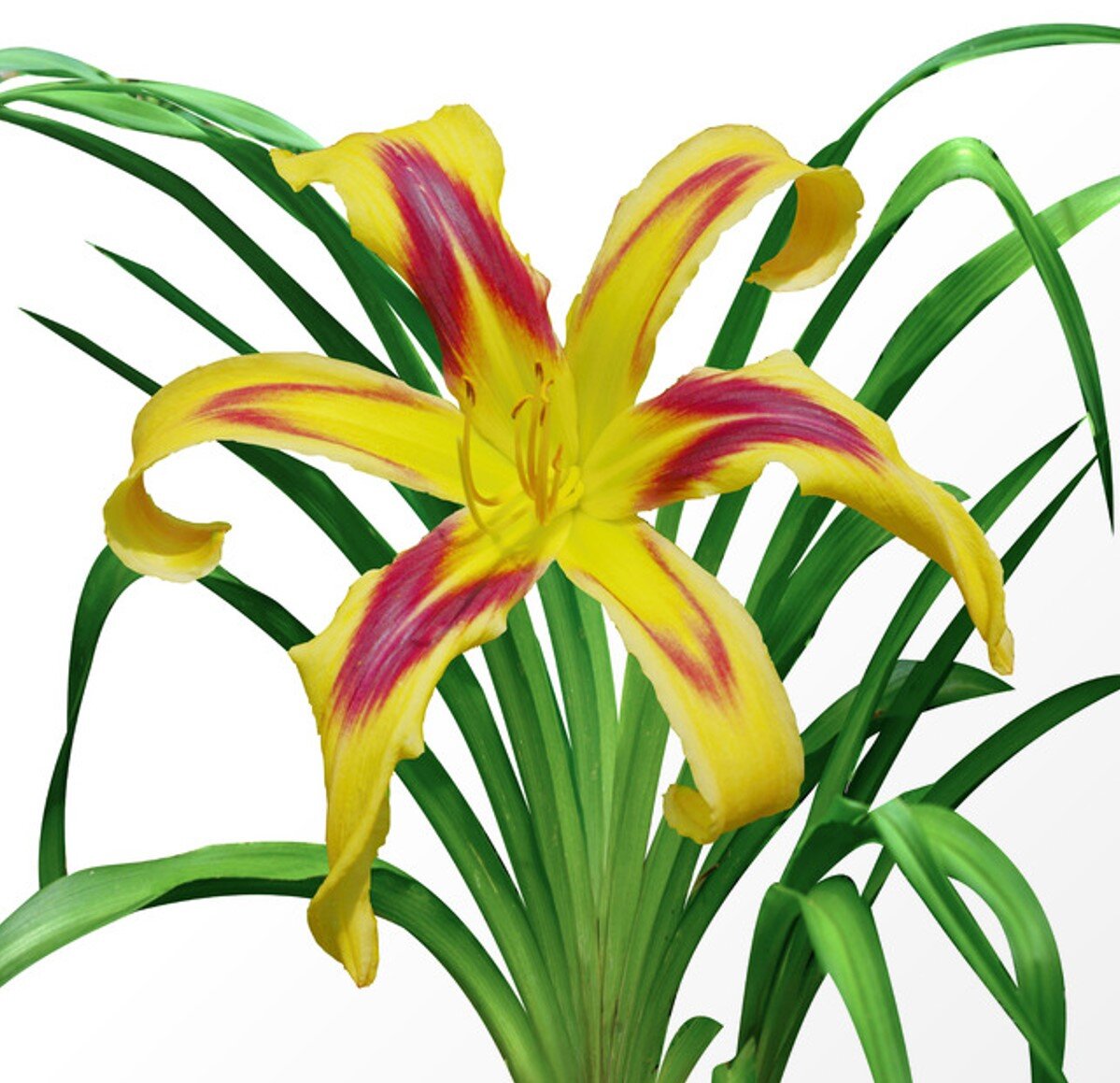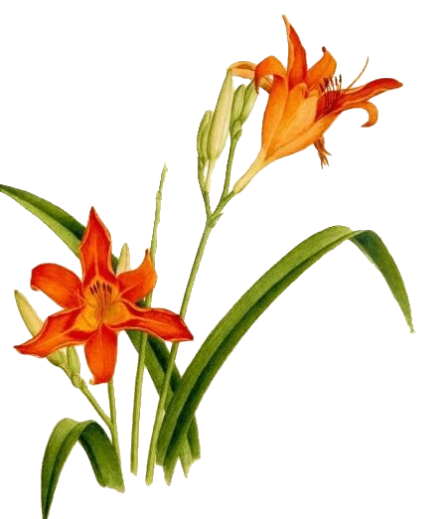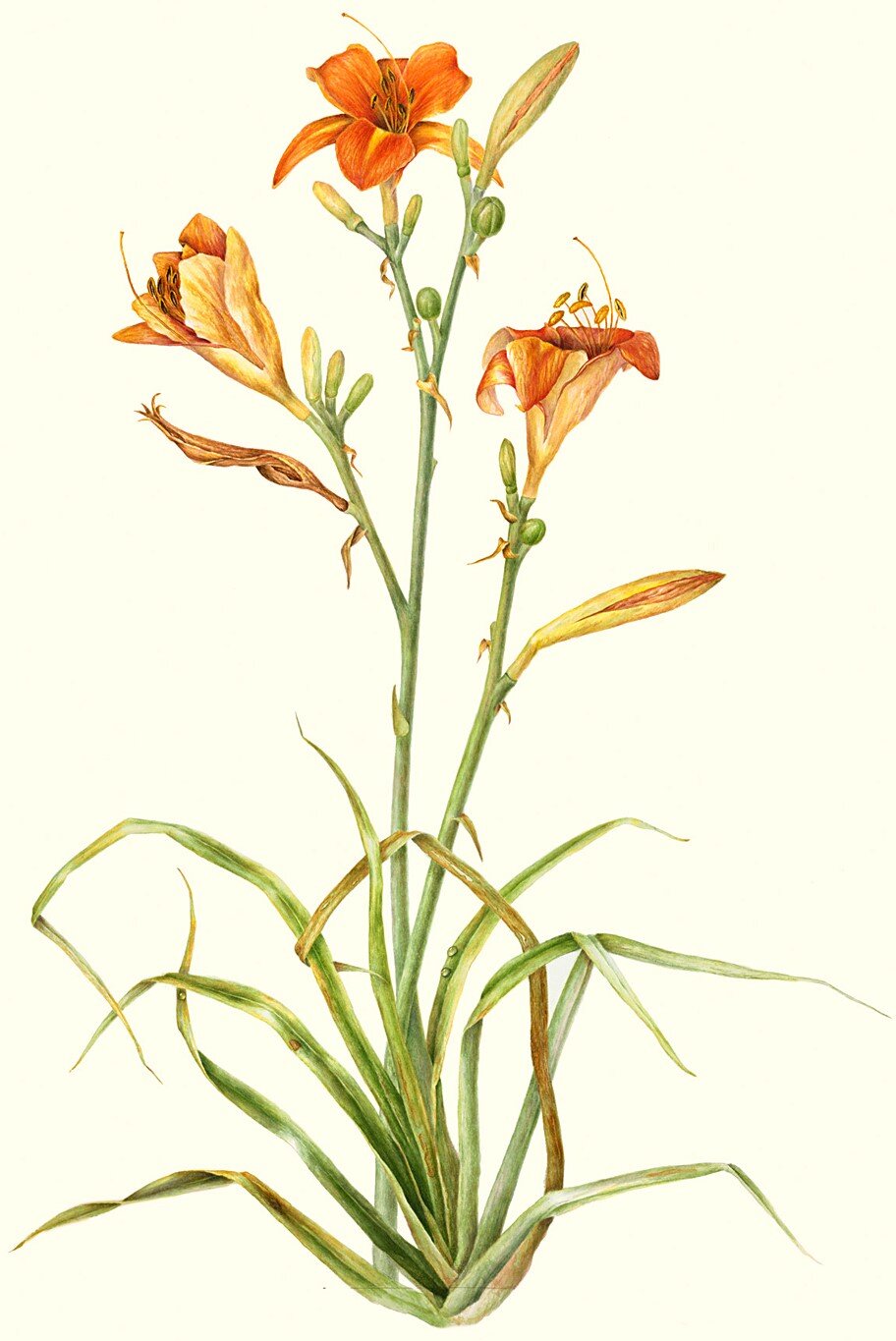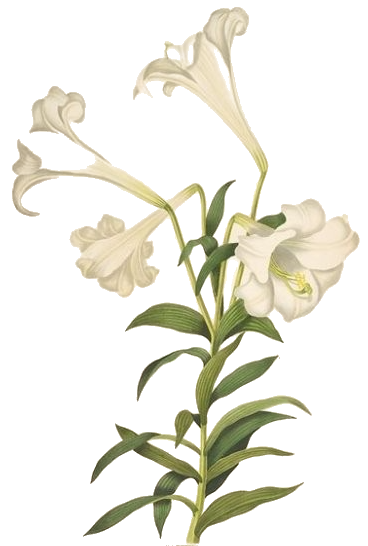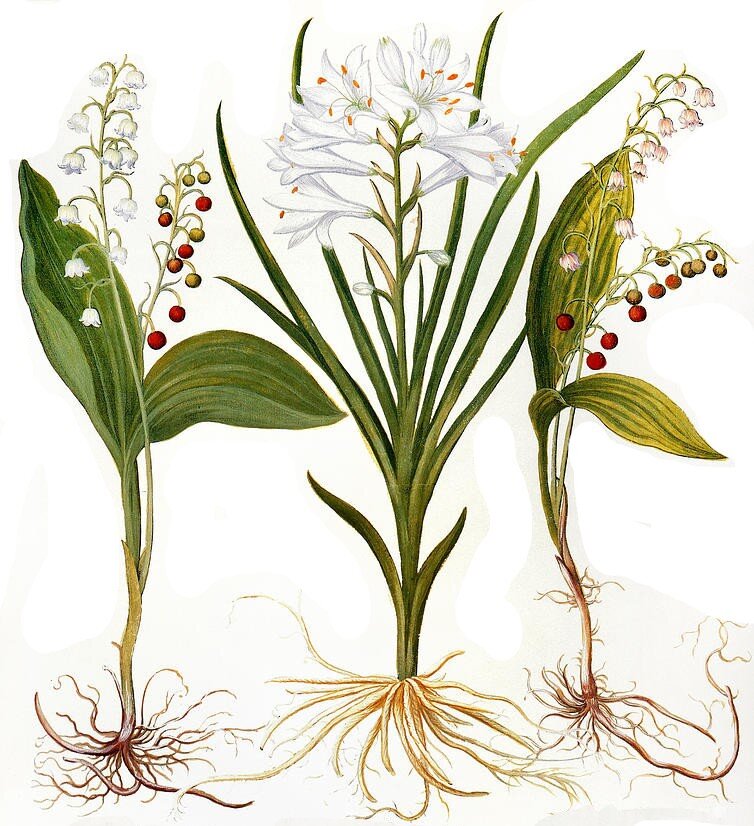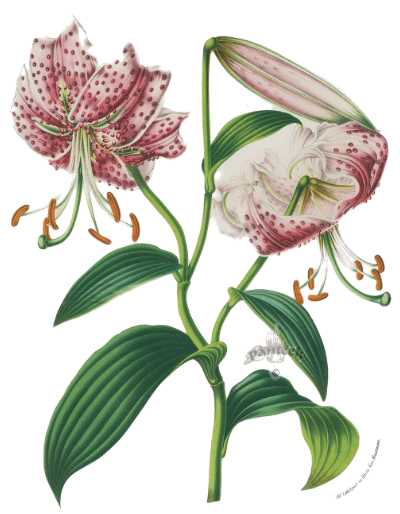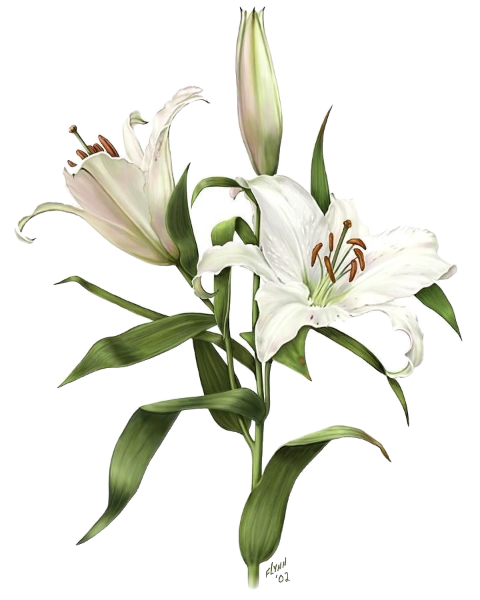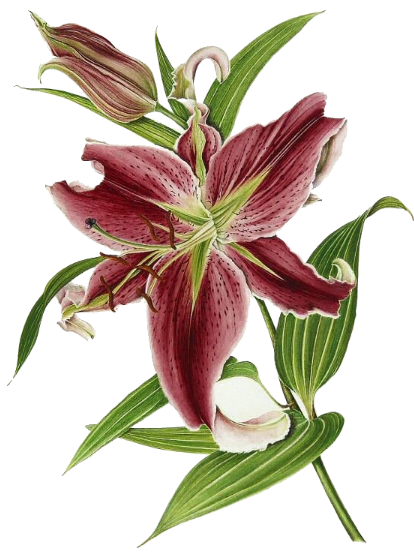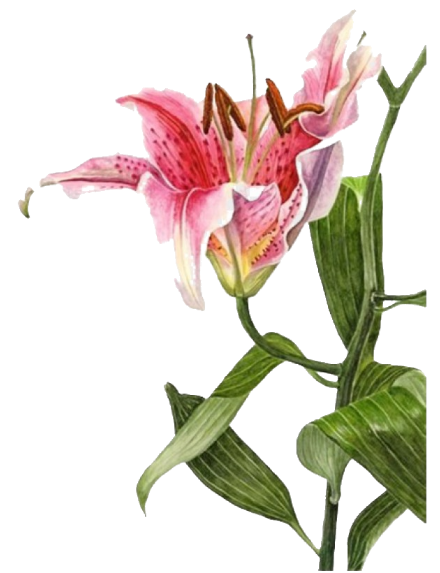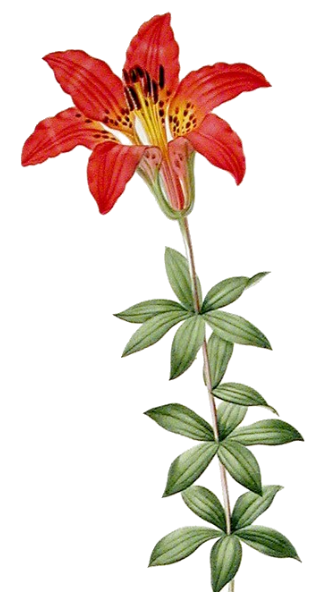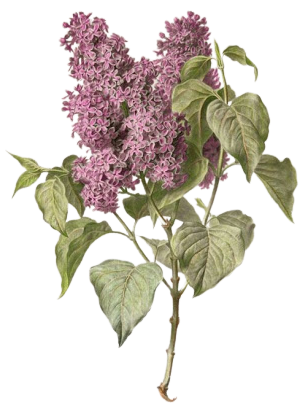alert yourself:
everyday
dangers
The cat’s liver metabolism nearly disables it as a detoxifying organ:
immediate kidney damage is the result.
Not in Your Home or Garden
…EVER!
It is wrong to assume that the cat’s “fussy” eating habits will shield him from being poisoned around the house. His curious nature and meticulous grooming routines predispose him to intoxication by common household toxins.
More so than dogs, the cat’s lack of certain liver enzymes which affects their liver metabolism, make them acutely sensitive to even small amounts of drugs, chemicals, houseplants, and flowers.[1] Worse, the feline instinct of hiding when ill means that exposure may not be evident in time for you to take action.
Most pet parents simply don’t know how deadly true lilies[2] (Lilium) and “daylilies” (Hemerocallis spp.): including the Tiger, Day, Asiatic, Easter, Star and Japanese Show lilies) can be. Florists often include them even in prepared “budget” arrangements, as the trumpet-shaped flowers are fragrant, inexpensive, and known as long-lasting.
But, every part of the plant…
the leaves, stems, stamens, pistils, pollen—even the vase water
that they are kept in—
is lethal to cats.
Lilies are nephrotoxic: ingesting any part can cause severe, irreversible renal (kidney) failure in felines.
Just licking pollen that may transfer onto his fur from a brief “curiosity tour” of your kitchen table flowers, can threaten his life within hours.
These must not be in your house, ever, or in your garden.
What are
“renal tubular
epithelial cells”?
According to the US Federal Food and Drug Administration (FDA) Center for Veterinary Medicine (CVM), the toxin, which does not threaten dogs in the same way, has not been identified; but the genus Lilium and the genus Hemerocallis produce a chemical that is present in all parts of the plant. The toxin is water soluble and causes renal tubular epithelial cells (TECs) to die. TECs are a kidney-resident population that responds and contributes to pathological processes in acute and chronic kidney disease: they mediate tubulointerstitial immune cell responses through the production of pro-inflammatory cytokines/chemokines and via interactions with the cat’s total immune mechanisms. Feline kidney damage is pathologically characterized by chronic tubulointerstitial inflammation and fibrotic scarring.
nephrotoxicity:
The swift path
…to death
Initially toxicosis will quickly present as vomiting , lethargy, drooling, weakness and/or unsteadiness, and inappetence (loss of appetite). Any but the latter may seemingly lessen over the subsequent 2-4 hours. Distention of the abdomen may be visible and painful. Acute kidney injury (AKI) begins at only 12 hours.
Within 12-24 hours, the cat may start to urinate frequently (polyuric renal failure) and become dehydrated. Ultimately, the cat will stop urinating because the kidneys lose function to produce urine (anuric renal failure). Because the kidneys regulate potassium level in the blood: uncontrolled, elevated potassium will manifest as heart arrhythmia, weakness, and seizures. Untreated, death will come within days.[3]
Medical intervention must be taken less than 18 hours post-exposure. An IV fluid diuresis (provoking the excretion as urine) for 48 hours will be needed (to minimize effect from the circulating toxin), as well as monitoring for the development of acute pancreatitis.
The MAIN HOUSEHOLD POISONS TO CATS:
Human medicines:
NSAIDs
Acetaminophen
Antidepressants
ADD/ADHD medications
Benzodiazepines and sleep aids
Birth control pills
ACE Inhibitors
Beta-blockers
Thyroid hormones
Cholesterol lowering agents
Simple, over-the-counter medicines such as pain-relieving NSAIDS (Non-steroidal anti-inflammatory medications, such as ibuprofen or naproxen) can cause gastric/stomach ulcerations and quickly lead to acute kidney failure and death. A single Paracetamol/acetaminophen (Tylenol®) tablet can be fatal to a cat, as it results in damage to red blood cells: limiting their ability to carry oxygen. Untreated, it can cause severe anemia (low red blood cell count), difficulty breathing, a facial swelling, liver failure and death. Beta-blockers and cardiac medications used to treat hypertension (high blood pressure) can swiftly depress feline respiratory and cardiovascular function (severe hypo-tension): already health-compromised cats are particularly sensitive.
Cats may be playfully attracted to pills, and even like the smell in the coating of certain drugs or antidepressants (e.g., Venlafaxine/Effexor®), which initially displays as vomiting and, in more serious instances, serotonin syndrome: a dangerous condition that raises provokes central nervous system (CNS) function, elevating temperature, heart rate, blood pressure, and leading to seizures. Anti-anxiety medications, including those used to encourage weight loss, benzodiazepines (anti-convulsants/muscle relaxants or sleep aids), and amphetamines for treating ADD/ADHD act a stimulant: the affected cat may exhibit toxicosis as hyperactivity or sedation: both potentially contributing to rapid heart failure.
Antihistamines and cold remedies similarly act as a stimulant causing elevated heart rates, blood pressure, body temperature and seizures (abnormal activity in the brain), and death. Even vitamins—particularly Vitamin D derivatives — can cause life-threatening spikes in blood calcium levels in cats that can lead to kidney failure.
Yard and House plants
Azaleas and rhododendrons. These pretty flowering plants contain toxins that may result in vomiting, diarrhea, coma, leading to death. The bulbs of tulips and daffodils may cause serious stomach problems, convulsions, and heart damage. Eating just a few seeds of the Sago palm may be enough to cause vomiting, seizures, and liver failure. Also concerning: amaryllis, cyclamen, foxglove, holly, ivy, lilacs, mistletoe, and poinsettia.
See the list, below.
Insecticides and Household Cleaners
Cats may ingest products for your lawn and garden by grooming themselves after walking or laying in a recently treated area. Household cleaners (laundry detergent, kitchen and bath surface cleaners, carpet cleaners, and toilet bowl cleaners) lead to damage of the digestive tract (the cat’s primary immune reservoir) and respiratory tract problems.
Grapes and Raisins
Even a small amount of grapes or raisins can rapidly develop to kidney failure. Repeated vomiting and hyperactivity are early signs; progressing to lethargy, diarrhea, reduced appetite, abdominal pain, decreased urination and abdominal pain.
Alcohol
Beverages that contain alcohol can cause vomiting, diarrhea, tremors, disorientation, trouble breathing, coma, and even death.
Raw Dough
The yeast in raw dough quickly produces alcohol and carbon dioxide. Even a small amount can expand and lead to a distended stomach and severe bloating that may require surgery to resolve.
Chocolate and Caffeinated Drinks
Chocolate contains substances called methylxanthines, which can cause vomiting and diarrhea, high body temperature, muscle tremors, abnormal heart rhythm, abdominal discomfort, increased thirst, and seizures.
Onions and Garlic
Onions, garlic, shallots, and scallions can cause damage to your cat’s red blood cells and lead to anemia. Poisoning is especially likely through concentrated forms such as onion soup mix or garlic powder. Cats with symptoms of lethargy, weakness, reduced appetite, pale gums, and orange to dark red urine should be taken to the vet immediately.
From the Department of Animal Science,
Cornell University and MSD veterinary journal:
common Flowering plants:
Amaryllis
Azalea [8]
Asiatic Lily[4]
Autumn Crocus
Bird of Paradise
Climbing Lily
Cyclamen
Daffodil [7]
Day Lily[5]
Easter Lily
Elephant Ear
Gladiola
Hyacinth [7]
Hydrangea
Iris
Persian Lilac (melia genus)
Kalanchoe
Lily of the Valley[6]
Narcissus
Poinsettia
Rubrum Lily
Stargazer Lily
Tiger Lily
Tulip
Wood Lily
common Ferns:
Asparagus Fern
Emerald Feather
Lace Fern
Plumosa Fern
common Indoor plants:
Aglaonema
Arrowhead Vine
Dracaena Deremensis
Dracaena Fragrans
Dracaena Marginata
Common Perennials:
Aloe Vera
Anthurium
Arum or Calla Lily
Hellebore
Morning Glory
Mother-in-law's Tongue
Nightshade
Pussy's Ears
Common Succulents:
Aloe Vera
Chandelier Plant
Crown of Thorns
Devil’s Backbone
Firestick
Mother of Millions
Mother of Thousands
Panda Plant
Pencil Cactus
Pencil Tree Plant
Jade Plant
Snake Plant
String of Pearls
String of Peas Plant
ASPCA List of Toxic and non-toxic Plants (with photos): click here
Pet Poison Control Centers:
Pet Poison Helpline: 855-764-7661
ASPCA Animal Poison Control Center: 888-426-4435
Endnotes:
[1] This is why so many cats quickly died after being fed melamine-adulterated cat foods; see: Marion Nestle, Pet Food Politics - The Chihuahua in the Coal Mine (2010).
[2] True lilies (genus Lilium) grow from true bulbs. Some other common plants, may have the term “lily” in their common name (Peace, Peruvian and Calla lily) grow from tubers, not bulbs. These plants instead, contain insoluble calcium oxalate crystals, while less severe, cause irritation from physical irritation of the crystals which are immediate, such as: oral pain, hypersalivation, vomiting or diarrheal also, swelling of the oral cavity (esophagus), pharynx and tongue may occur as a result.
[3] See: K. Fitzgerald, Lily toxicity in the cat, (available: NIH, National Library of Medicine): also: D. Chaplain, Overview of the Immune Response, (available: NIH, National Library of Medicine).
[4] According to the US FDA (CVM), the most
dangerous lilies are:
Asiatic lily (including hybrids) Lilium asiaticum;
Daylily: Hemerocallis species;
Easter lily: Lilium longiflorum;
Japanese Show lily: Lilium speciosum;
Oriental lily: Lilium orientalis;
Rubrum lily: Lilium speciosum var. rubrum;
Stargazer lily: Lilium ‘Stargazer’ (a hybrid);
Tiger lily: Lilium tigrinum or lancifolium; and
Wood lily: Lilium philadelphicum or umbellatum
[5] Daylilies, which are in the genus Hemerocallis, are likewise toxic to cats and can cause acute renal (kidney) failure and acute pancreatitis.
[6] While Lily of the Valley (Convallaria majalis) are not renally toxic, they contain cardenolides and are potently cardiotoxic. They possess cardiac glycosides, potent organic compounds that act on the cellular sodium-potassium ATPase pump, provoking cardiac arrhythmias, decreased carbon monoxide ejection, weak pulse, hyperkalemia (elevated potassium levels that affect central nervous system function), low blood pressure (hypotension), which can lead to seizures or coma; and possibly death. Treatment is largely symptomatic and supportive.
[7] Daffodils and Hyacinth contain lycorine, a crystalline alkaloid, and calcium oxalate crystals, which can cause a variety of symptoms in cats.
[8] Azaleas contain Grayanotoxins: a group of neurotoxins, specifically diterpenoids, found in plants of the Ericaceae family, including rhododendrons, and are responsible for "mad honey" poisoning, causing symptoms like bradycardia and hypotension














